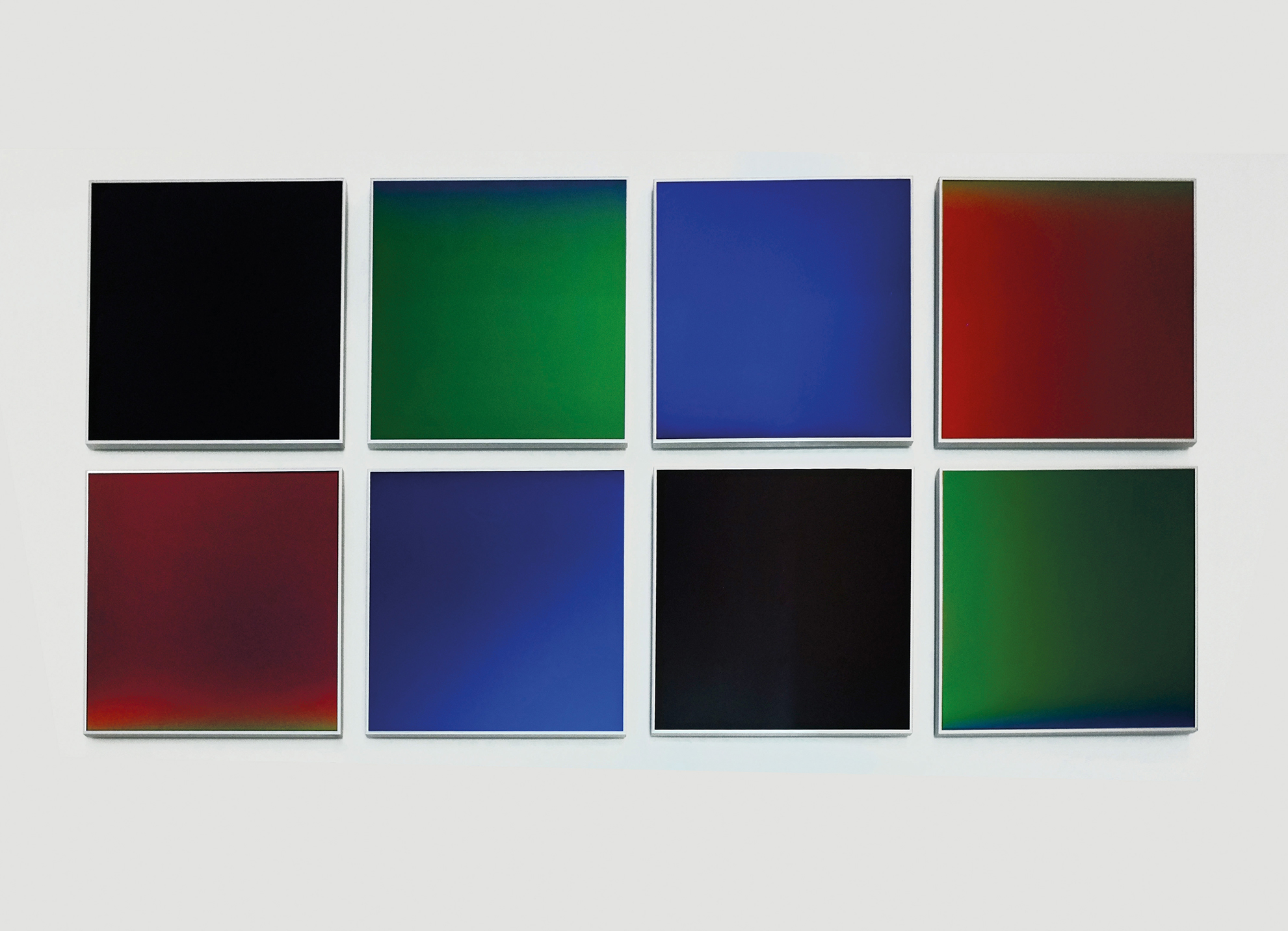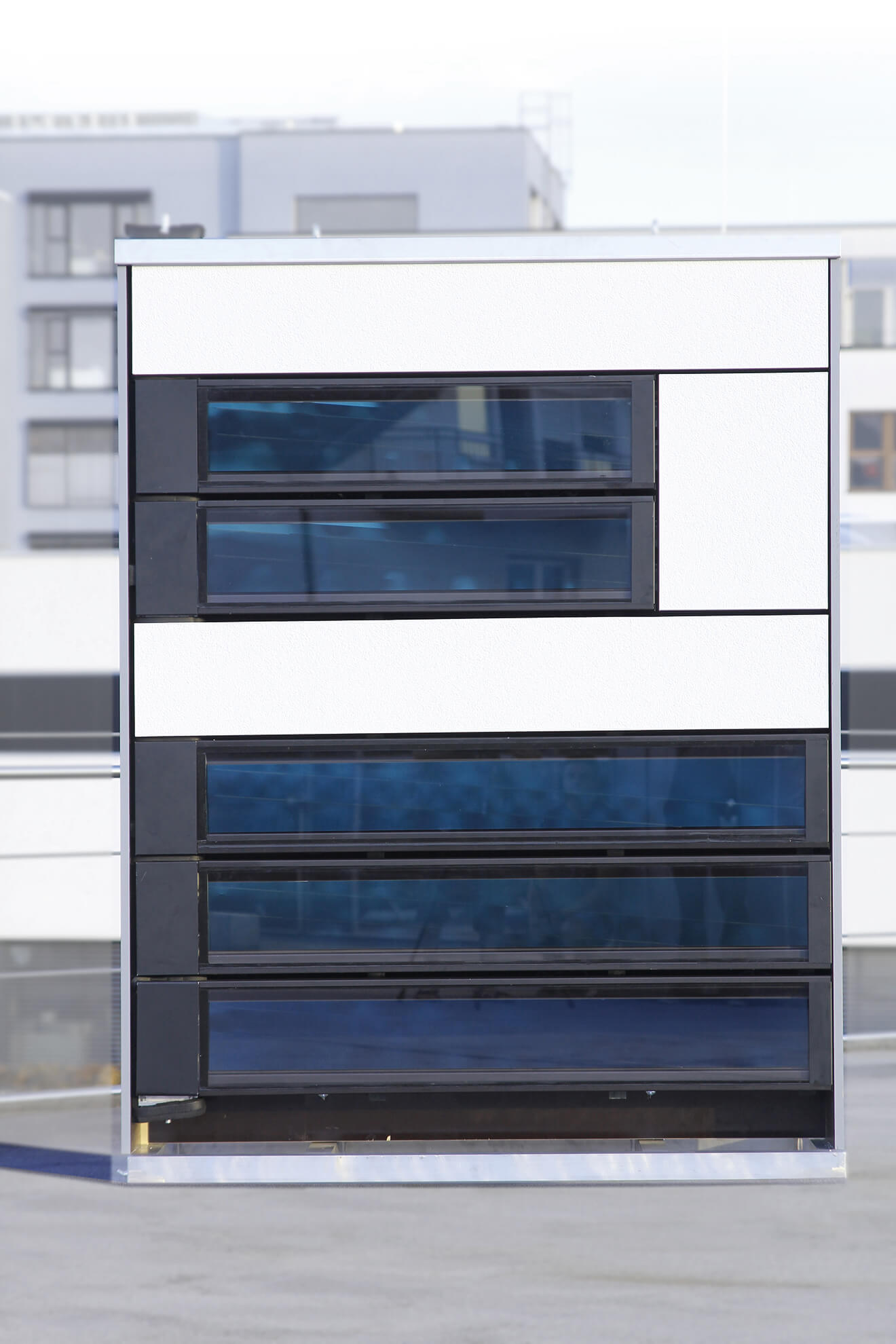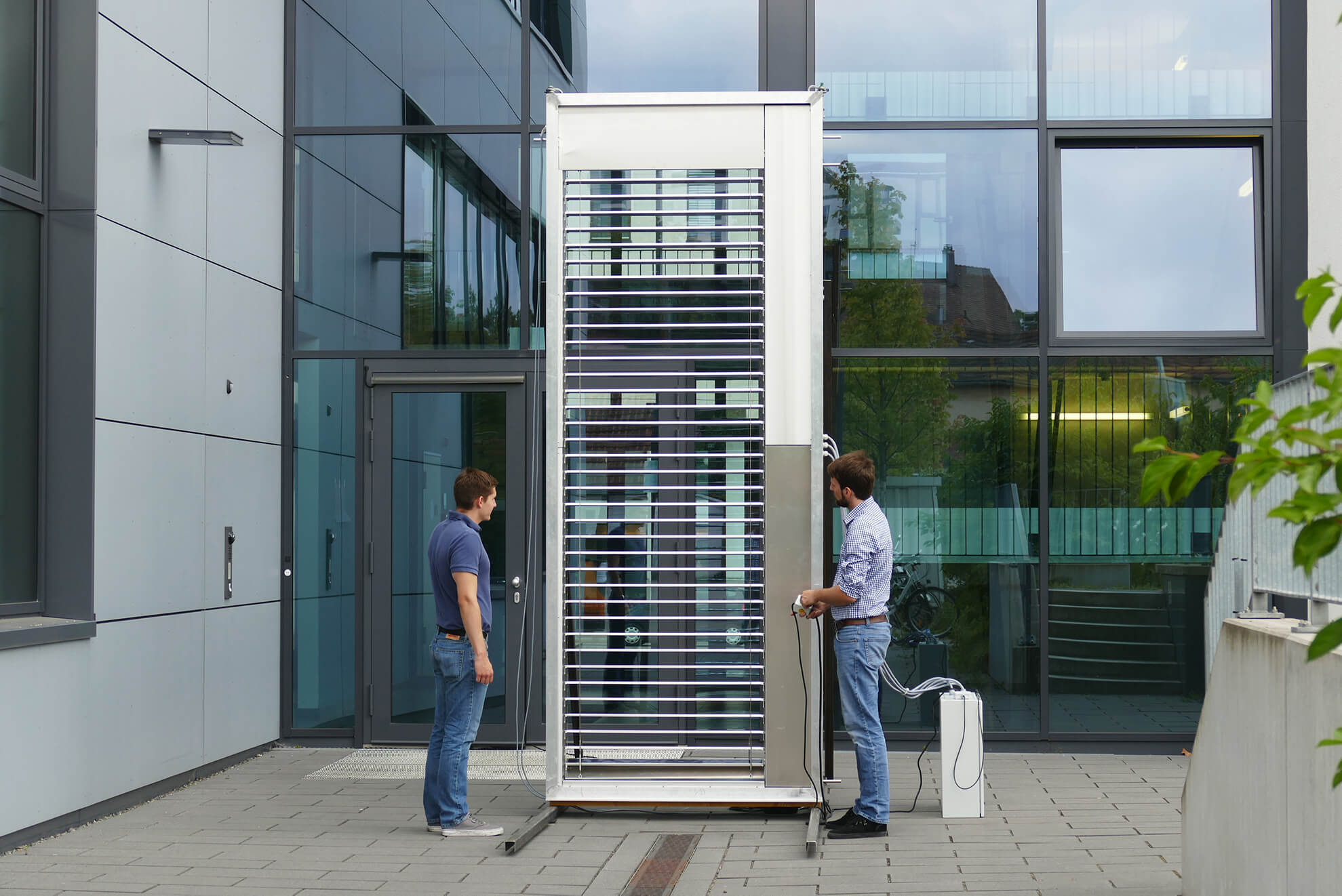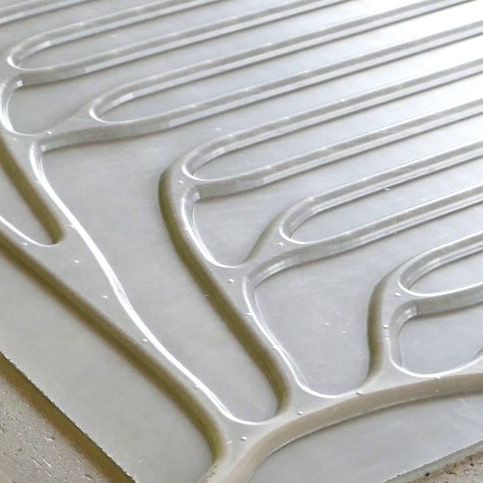Press Release #3
Fraunhofer ISE at the BAU 2019 in Munich
Digitalization, climate change, resource scarcity and housing shortages are top challenges requiring innovative and sustainable solutions, also from the building industry. The member institutes of the Fraunhofer Building Alliance are performing visionary research to find interdisciplinary solutions and systems for the living spaces of the future. With a special show at the BAU 2019 (14-19 January 2019 in Munich), the Fraunhofer Alliance is presenting innovative products and system solutions from their building research. The Fraunhofer Institute for Solar Energy Systems ISE will display innovative and sustainable solutions at a special show in Hall C2, Booth 528.
The core of the Alliance’s exhibit is the walk-in “Innovation Cube”, a two-story cube with exhibits on four themes: Digitalization: The Physical Building and The Digital Twin, New Sustainability: Materials, Recycling and Energy Efficiency, Smart Living: User-friendly Living, and Smart Cities and Resilient Quarters. Fraunhofer ISE is displaying the following exhibits in the cube:
Colorful Building-integrated Photovoltaics – Aesthetic and Efficient
The colorful modules developed at Fraunhofer ISE combine aesthetics, energy efficiency and architectural freedom of design. They are particularly suited for building-integrated photovoltaic systems. These elements demonstrate high color saturation and offer good angle stability by glare reduction while maintaining a high efficiency, i.e. 93 % of the original module efficiency. The solar cells under the colored layer are hardly visible.
Solar Thermal Strip Collectors Provide Large Freedom of Design
The solar thermal collectors developed in the Arkol project offer more flexibility and freedom of design compared to the classical collector. It enables an infinitely variable, flexible distance of the individual heat pipes. In the area between the glazed collector strips, classic materials, like wood and plaster, and different structures and colors can be used. The collector connection for transferring the gained heat is provided in the form of a heat pipe which engages in a form-fit manner with a corresponding extruded collection area. In contrast to collectors through which fluid flows directly, the connection of heat pipes of different lengths to a shared collection duct is hydraulically unproblematic. A modular structure and the “dry” connection of the heat pipe to the collection duct lead to simpler maintenance and lower installation costs.
Solar Thermal Blinds – Energy Efficient and Flexible
The solar thermal blind, also developed in the Arkol project, enables the energetically optimal regulation of the energy flows through the façade for the first time. The lamellae have a spectrally selective coating; a heat pipe transports the heat of the lamellae to the collecting channel located on the side. Thanks to the switchable connection to the collecting duct, the solar thermal blind can be adjusted, turned, pulled up and down just as for a conventional blind. The user can control the sun protection and heat gain functions of the blind depending on the sun’s position.
TABSOLAR – Solar Thermal Façade Elements and Thermally Active Building Components Made of Ultra High Performance Concrete (UHPC)
The solar thermal façade element TABSOLAR combines architecturally sophisticated design with solar heat gain. Using a membrane vacuum molding method, FracTherm® channel structures are formed directly within the ultra-high performance concrete (UHPC) panels. For improved absorption, a spectrally selective coating can be applied to the UHPC. The product family which includes TABSOLAR Premium, Economy and Design allows for different applications and design possibilities.
BIM – Digital Innovations That Pay Off
At the BAU 2019, Fraunhofer ISE presents innovative building information models (BIM) live on the PC. Adaptive simulation models are useful throughout the entire planning stages, from early to late. Semantic Web Technologies assist in finding the best products for the specific application.
CRAVEzero: Reducing Life Cycle Costs of Zero Energy Buildings
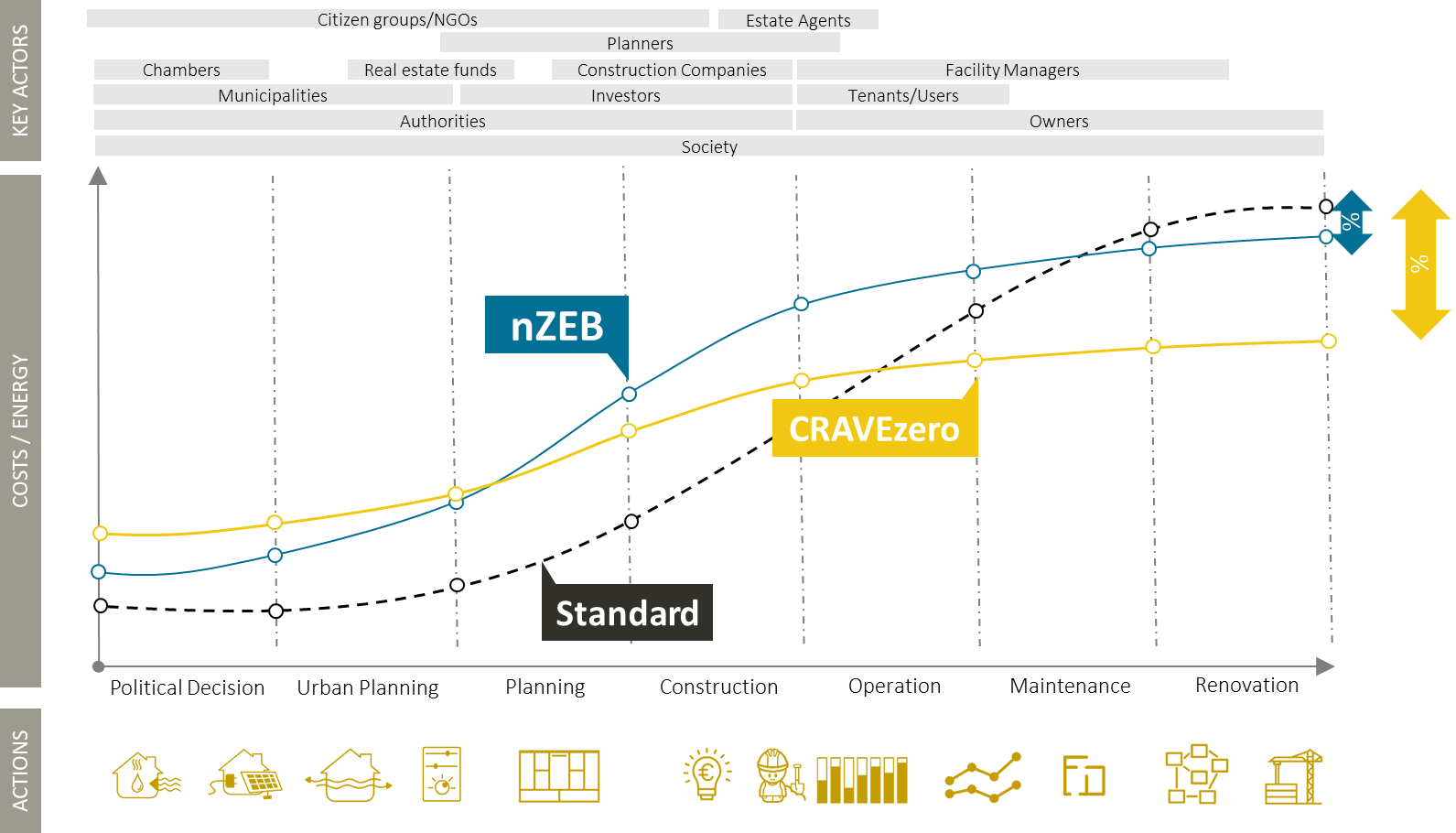
Nearly zero energy buildings, that is, buildings with very low energy consumption are technologically feasible today. Bringing these technologies cost-effectively and quickly onto the market is the goal of the Horizon 2020 CRAVEzero project. To achieve this, the additional building costs for processes, technologies and building operation must be reduced, planning and construction processes must be accelerated and innovative business models must be developed. The platform CRAVEzero pinboard organizes all of the available information and data for realizing nearly zero energy buildings with the lowest possible life cycle costs. Reliable data bases of life cycle costs and the cost reduction potential for different processes and technologies, methods, solutions and business models are included.
More information on the topics and solutions presented can be found here:
https://www.bau.fraunhofer.de/en/press_events/press/bau2019.html
Last modified:
